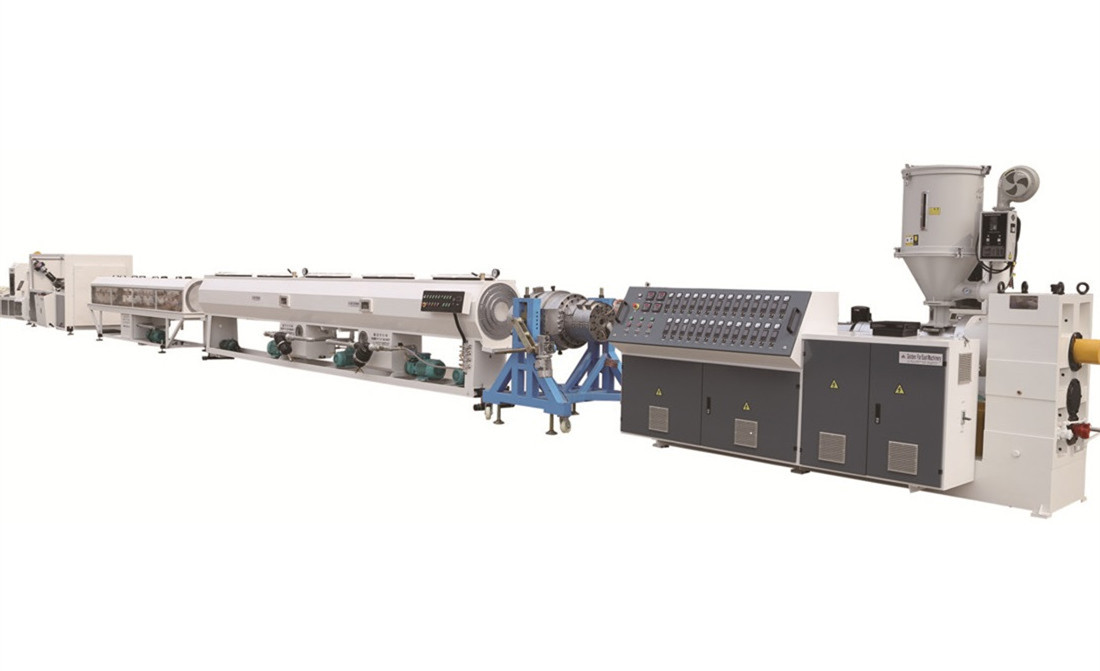Golden Far East Machinery Co.,Ltd.
Manufacturing Plastic Machinery Factory
The strength and durability of the plastic Pipe is, to a large extent, dependent on the component material. The different materials or compounds employed in the production of the plastic pipes include the Polyvinylchloride, the Polyethylene (PE) and the Polypropylene (PPR).
Each of them have their unique properties and the characteristics they confer on the plastic pipe. However, mixing the PE and the PPR as raw materials in the pipe extrusion process will have some effects on the resulting pipe product. In such case, a special equipment known as the high speed PE/PPR pipe extrusion line is employed.
But first, we need to look at the various properties of the two types of pipe materials; the Polyethylene (PE) material and the Polypropylene (PPR) material.
Let's get started!

It is obtained from the polymerization of ethylene, from which its name comes.
It is very resistant to wear and abrasion and has a low coefficient of friction. Other characteristics are low moisture absorption and low temperature resistance.
It is one of the most common plastics due to its low price. It can be produced by different reactions, each producing a different type of polyethylene. Its use will depend on this process, and it can be used for bags, diaper bases, food containers or toys, among other things.
It has a memory effect, which PP does not have, which consists of maintaining a stable form at a certain temperature (sealing temperature) that can be modified by heating the polymer to a temperature higher than the sealing temperature. It is commonly used in insulation and packaging.
It is indicated for labels to be attached to high density polyethylene containers. Also recommended for applications where the use of PVC is not desired due to environmental issues.
This thermoplastic polymer, Polypropylene, is obtained from the polymerization of the compound, propylene also known as propene. It has a high chemical resistance. It is opaque and bends easily. It is resistant to corrosive products. In the PPR pipe machine factory, the PPR material is used for the manufacture of pipes, household appliances, food packaging, textiles...
Its use in labels is indicated for cosmetic products, drugstore and perfumery. It can be white matt or glossy and transparent white and glossy.
We may also want to look at the most mentioned type, which is the PVC.
Hence, mixing both PE and PPR materials is sure to provide a pipe with material that shares the individual properties such as the adaptability to high temperature fluids, high pressure and more.
However, there are special extrusion lines that have been designed to integrate both types of plastic materials to give a more advanced pipe product.
For example, there are Single screw high speed PE/PPR pipe extrusion lines for PE & PPR Pipes. Single Screw extruders are more energy efficient in comparison to single screw and are best suited for PE & PPR Pipes extrusion. Known for excellent power optimization, the pressure output ranges from60 kg/hr up to 850 kg/hr.
Wear-resistant coating guarantees long screw life at high rpm
Direct coupled design ensures minimum transmission loss
Versatile screw designed for PE & PP Random Copolymer
Grooved feed design extruder
L/D ratio of 37 : 1 for excellent molten homogeneity
4th generation energy-efficient extruder